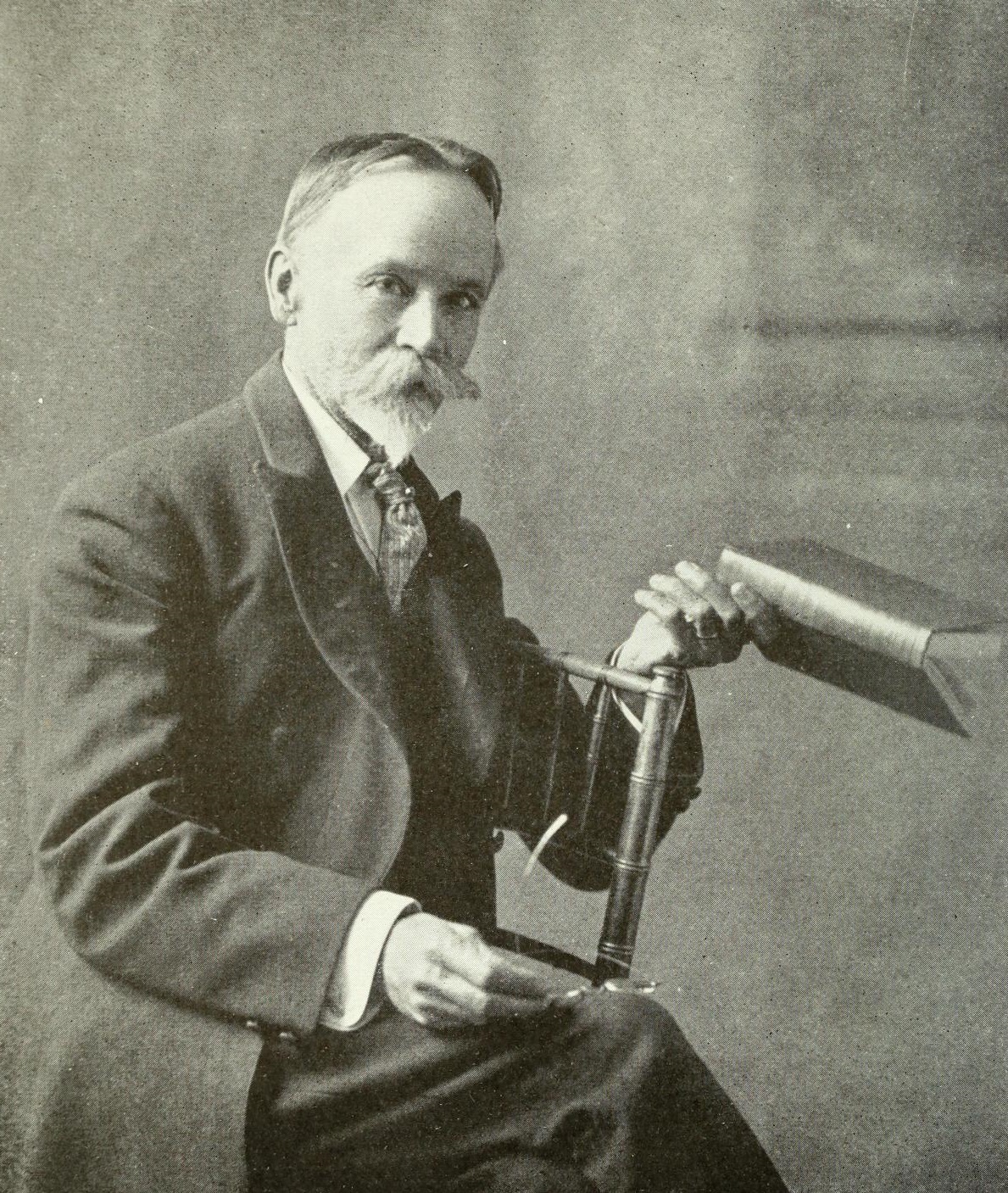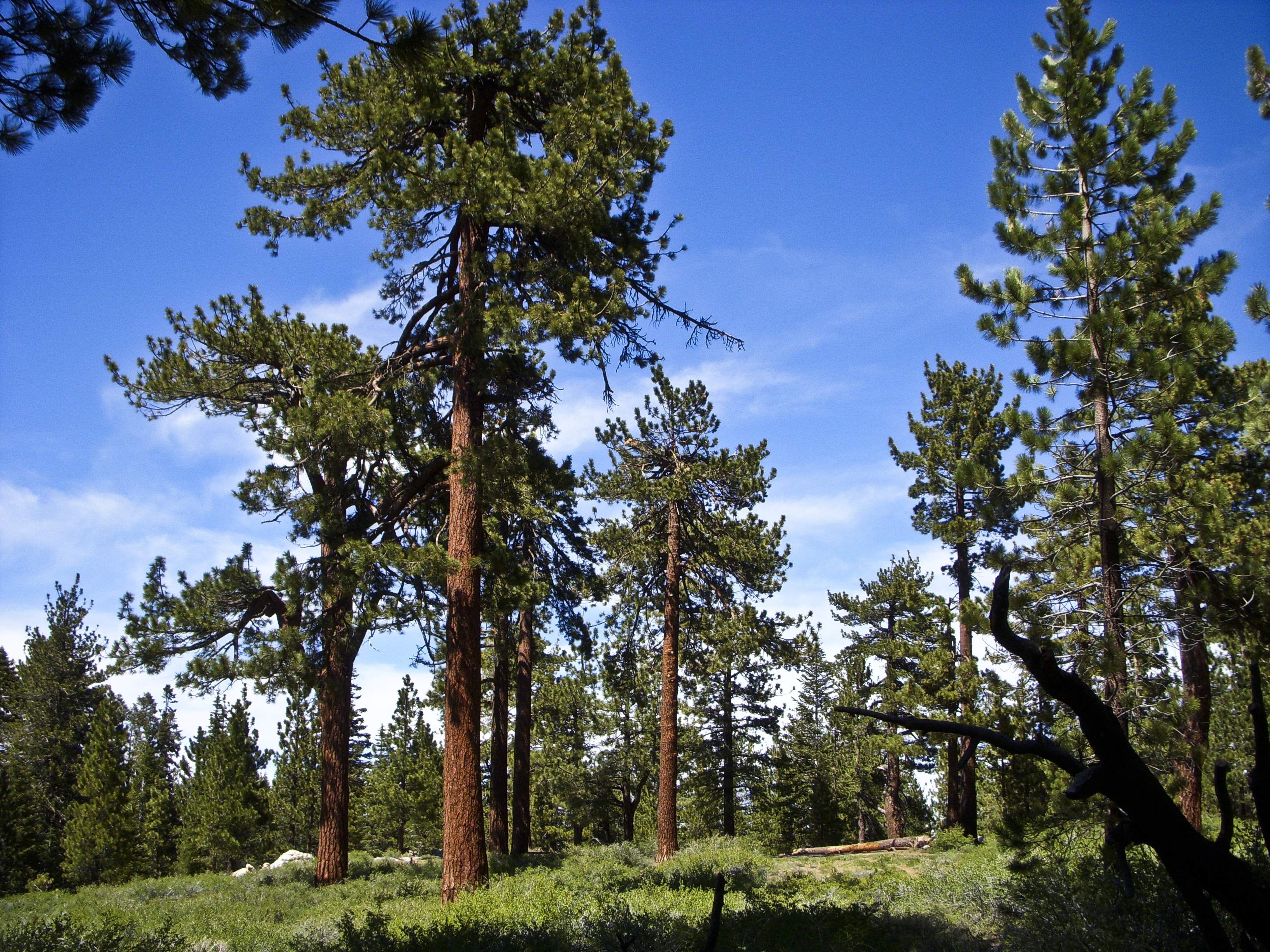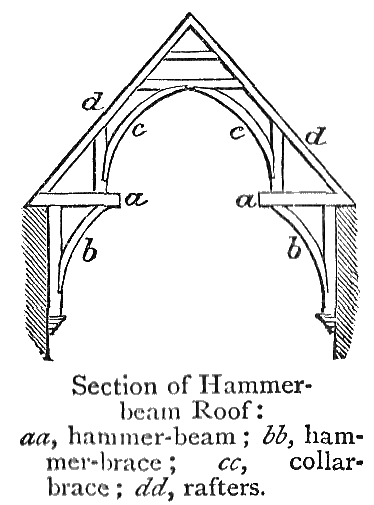|
First Church Of Christ (Northampton, Massachusetts)
The First Church of Christ is a historic congregational church located in Northampton, Massachusetts and a contributing property to the Northampton Downtown Historic District. The current church building is the fifth meetinghouse of the congregation and was built by Peabody & Stearns from 1877 to 1878. It features a clock by E. Howard & Co., a Johnson & Son organ, and stained glass by Louis Comfort Tiffany. Design The First Church of Christ is a Gothic Revival style church was built to a design by the Boston-based firm of Peabody & Stearns. Construction started in May 1877 and was completed in April 1878. P. B. Johnson was selected as the building contractor. The exterior of the building was constructed entirely of stone with a slate roof. The foundation was built with granite and the walls with randomly-coursed, quarry-faced Longmeadow brownstone. The church structure boasts a front-gabled nave flanked by cross-gable wings, adorned with high, sharply-pitched parapets. A ... [...More Info...] [...Related Items...] OR: [Wikipedia] [Google] [Baidu] |
Massachusetts Route 9
Route 9 is a major east–west state highway in Massachusetts, United States. Along with U.S. Route 20 (US 20), Route 2, and Interstate 90, Route 9 is one of the major east–west routes of Massachusetts. The western terminus is near the center of the city of Pittsfield. After winding through the small towns along the passes of the Berkshire Mountains, it crosses the college towns of the Pioneer Valley and then south of the Quabbin Reservoir and the rural areas of western Worcester County. Entering the city of Worcester from the southwestern corner of the city, it passes through the center of the city and forms the major commercial thoroughfare through the MetroWest suburbs of Boston, parallel to the Massachusetts Turnpike. Crossing the Route 128 freeway circling Boston, it passes through the inner suburbs of Newton and Brookline along Boylston Street, and enters Boston on Huntington Avenue, before reaching its eastern terminus at Copley Square. Route descrip ... [...More Info...] [...Related Items...] OR: [Wikipedia] [Google] [Baidu] |
Parapet
A parapet is a barrier that is an upward extension of a wall at the edge of a roof, terrace, balcony, walkway or other structure. The word comes ultimately from the Italian ''parapetto'' (''parare'' 'to cover/defend' and ''petto'' 'chest/breast'). Where extending above a roof, a parapet may simply be the portion of an exterior wall that continues above the edge line of the roof surface, or may be a continuation of a vertical feature beneath the roof such as a fire wall or party wall. Parapets were originally used to defend buildings from military attack, but today they are primarily used as guard rails, to conceal rooftop equipment, reduce wind loads on the roof, and to prevent the spread of fires. Parapet types Parapets may be plain, embattled, perforated or panelled, which are not mutually exclusive terms. *Plain parapets are upward extensions of the wall, sometimes with a coping at the top and corbel below. *Embattled parapets may be panelled, but are pierced, if not ... [...More Info...] [...Related Items...] OR: [Wikipedia] [Google] [Baidu] |
The Times Record (Maine)
''The Times Record'' (also known as the ''Bath-Brunswick Times Record'') is an independently-owned weekly newspaper published on Fridays that covers the Midcoast region of Maine. Operating out of Brunswick, it was founded in 1967 as a result of a merger between two historic newspapers, the ''Brunswick Record'' and the ''Bath Daily Times''. It is owned by the Maine Trust for Local News. History The first publication of ''The Times Record'' was published in 1967. The newspaper was a merger of the ''Brunswick Record'', with a print circulation of 7,500 daily papers, and the ''Bath Daily Times'', with a daily circulation of 3,500, for a total of 11,000 daily customers. The ''Brunswick Record'' was first published in November 1902 and the ''Bath Daily Times'' begun in 1869. The ''Bath Daily Times'' can be traced back to the year . Up until the 1890s, they had many name changes and mergers dating back to that time. In Frank B. Nichols bought the paper, and kept its name, and ... [...More Info...] [...Related Items...] OR: [Wikipedia] [Google] [Baidu] |
George Washington Cable
George Washington Cable (October 12, 1844 – January 31, 1925) was an American novelist notable for the realism of his portrayals of Creole life in his native New Orleans, Louisiana. He has been called "the most important southern artist working in the late 19th century", as well as "the first modern Southern writer." In his treatment of racism, mixed-race families and miscegenation, his fiction has been thought to anticipate that of William Faulkner. He also wrote articles critical of contemporary society. Due to hostility against him after two 1885 essays encouraging racial equality and opposing Jim Crow, Cable moved with his family to Northampton, Massachusetts. He lived there for the next thirty years, then moved to Florida. Early life George Washington Cable was born in 1844 in New Orleans, Louisiana, to George W. Cable Sr., and Rebecca Boardman Cable. His parents were wealthy slaveholders, members of the Presbyterian Church and of New Orleans society, whose familie ... [...More Info...] [...Related Items...] OR: [Wikipedia] [Google] [Baidu] |
Yellow Pine
In ecology and forestry, yellow pine refers to a number of conifer species that tend to grow in similar plant communities and yield similar strong wood. In the Western United States, yellow pine refers to Jeffrey pine or ponderosa pine. In the Southeastern United States, yellow pine refers to longleaf pine, shortleaf pine, slash pine, or loblolly pine. In the United Kingdom, yellow pine refers to eastern white pine or Scots pine. In New Zealand, it refers to '' Halocarpus biformis''. Western United States The Jeffrey pine and the ponderosa pine are common in drier montane areas of the Sierra Nevada. They are often confused by casual observers. Across the remainder of the American West, Jeffrey pine is absent, with ponderosa pine being the sole yellow pine. Jeffrey pine is more stress tolerant than ponderosa pine in the Sierra Nevada. At higher elevations, on poorer (including ultramafic) soils, in colder climates, and in drier climates, Jeffrey pine replaces ponderosa as the ... [...More Info...] [...Related Items...] OR: [Wikipedia] [Google] [Baidu] |
Fluted Column
Fluting in architecture and the decorative arts consists of shallow Groove (joinery), grooves running along a surface. The term typically refers to the curved grooves (flutes) running vertically on a column shaft or a pilaster, but is not restricted to those two applications. If the scoops taken out of the material meet in a sharp ridge, the ridge is called an arris. If the raised ridge between two flutes appears flat, the ridge is a . Fluted columns are common in the tradition of classical architecture but were not invented by the ancient Greeks, but rather passed down or learned from the Mycenaean Greece, Mycenaeans or the Ancient Egypt, Egyptians. Especially in stone architecture, fluting distinguishes the column shafts and pilasters visually from plain masonry walls behind.Lawrence, 101 Fluting promotes a play of light on a column which helps the column appear more perfectly round than a smooth column. As a strong vertical element it also has the visual effect of minimizing a ... [...More Info...] [...Related Items...] OR: [Wikipedia] [Google] [Baidu] |
William F
William is a masculine given name of Germanic languages, Germanic origin. It became popular in England after the Norman Conquest, Norman conquest in 1066,All Things William"Meaning & Origin of the Name"/ref> and remained so throughout the Middle Ages and into the modern era. It is sometimes abbreviated "Wm." Shortened familiar versions in English include Will (given name), Will or Wil, Wills, Willy, Willie, Bill (given name), Bill, Billie (given name), Billie, and Billy (name), Billy. A common Irish people, Irish form is Liam. Scottish people, Scottish diminutives include Wull, Willie or Wullie (as in Oor Wullie). Female forms include Willa, Willemina, Wilma (given name), Wilma and Wilhelmina (given name), Wilhelmina. Etymology William is related to the German language, German given name ''Wilhelm''. Both ultimately descend from Proto-Germanic ''*Wiljahelmaz'', with a direct cognate also in the Old Norse name ''Vilhjalmr'' and a West Germanic borrowing into Medieval Latin ''Wil ... [...More Info...] [...Related Items...] OR: [Wikipedia] [Google] [Baidu] |
Pulpit
A pulpit is a raised stand for preachers in a Christian church. The origin of the word is the Latin ''pulpitum'' (platform or staging). The traditional pulpit is raised well above the surrounding floor for audibility and visibility, accessed by steps, with sides coming to about waist height. From the late Middle Ages, late medieval period onwards, pulpits have often had a canopy known as the sounding board, ''tester'' or ''abat-voix'' above and sometimes also behind the speaker, normally in wood. Though sometimes highly decorated, this is not purely decorative, but can have a useful acoustic effect in projecting the preacher's voice to the Church (congregation), congregation below, especially prior to the invention of modern audio equipment. Most pulpits have one or more book-stands for the preacher to rest his bible, notes or texts upon. The pulpit is generally reserved for clergy. This is mandated in the regulations of the Catholic Church, and several others (though not a ... [...More Info...] [...Related Items...] OR: [Wikipedia] [Google] [Baidu] |
Hammerbeam Roof
A hammerbeam roof is a decorative, open timber roof truss typical of English Gothic architecture and has been called "the most spectacular endeavour of the English Medieval carpenter". They are traditionally timber framed, using short beams projecting from the wall on which the rafters land, essentially a tie beam which has the middle cut out. These short beams are called hammer-beams and give this truss its name. A hammerbeam roof can have a single, double or false hammerbeam truss. Design A hammer-beam is a form of timber roof truss, allowing a hammerbeam roof to span greater than the length of any individual piece of timber. In place of a normal tie beam spanning the entire width of the roof, short beams – the hammer beams – are supported by curved braces from the wall, and hammer posts or arch-braces are built on top to support the rafters and typically a collar beam. The hammerbeam truss exerts considerable thrust on the walls or posts that support it. Hamme ... [...More Info...] [...Related Items...] OR: [Wikipedia] [Google] [Baidu] |
Chapel
A chapel (from , a diminutive of ''cappa'', meaning "little cape") is a Christianity, Christian place of prayer and worship that is usually relatively small. The term has several meanings. First, smaller spaces inside a church that have their own altar are often called chapels; the Lady chapel is a common type of these. Second, a chapel is a place of worship, sometimes Interfaith worship spaces, interfaith, that is part of a building, complex, or vessel with some other main purpose, such as a school, college, hospital, palace or large aristocratic house, castle, barracks, prison, funeral home, hotel, airport, or military or commercial ship. Third, chapels are small places of worship, built as satellite sites by a church or monastery, for example in remote areas; these are often called a chapel of ease. A feature of all these types is that often no clergy are permanently resident or specifically attached to the chapel. For historical reasons, ''chapel'' is also often the term u ... [...More Info...] [...Related Items...] OR: [Wikipedia] [Google] [Baidu] |
Finial
A finial () or hip-knob is an element marking the top or end of some object, often formed to be a decorative feature. In architecture, it is a small decorative device, employed to emphasize the Apex (geometry), apex of a dome, spire, tower, roof, or gable or any of various distinctive ornaments at the top, end, or corner of a building or structure. A finial is typically carved in stone. Where there are several such elements they may be called pinnacles. The very top of a finial can be a floral or foliated element called a bouquet. Smaller finials in materials such as metal or wood are used as a decorative ornament on the tops or ends of poles or rods such as tent-poles or curtain rods or any object such as a piece of furniture. These are frequently seen on top of bed posts or clocks. Decorative finials are also commonly used to fasten lampshades, and as an ornamental element at the end of the handles of souvenir spoons. The charm at the end of a pull chain (such as for a ceiling ... [...More Info...] [...Related Items...] OR: [Wikipedia] [Google] [Baidu] |







